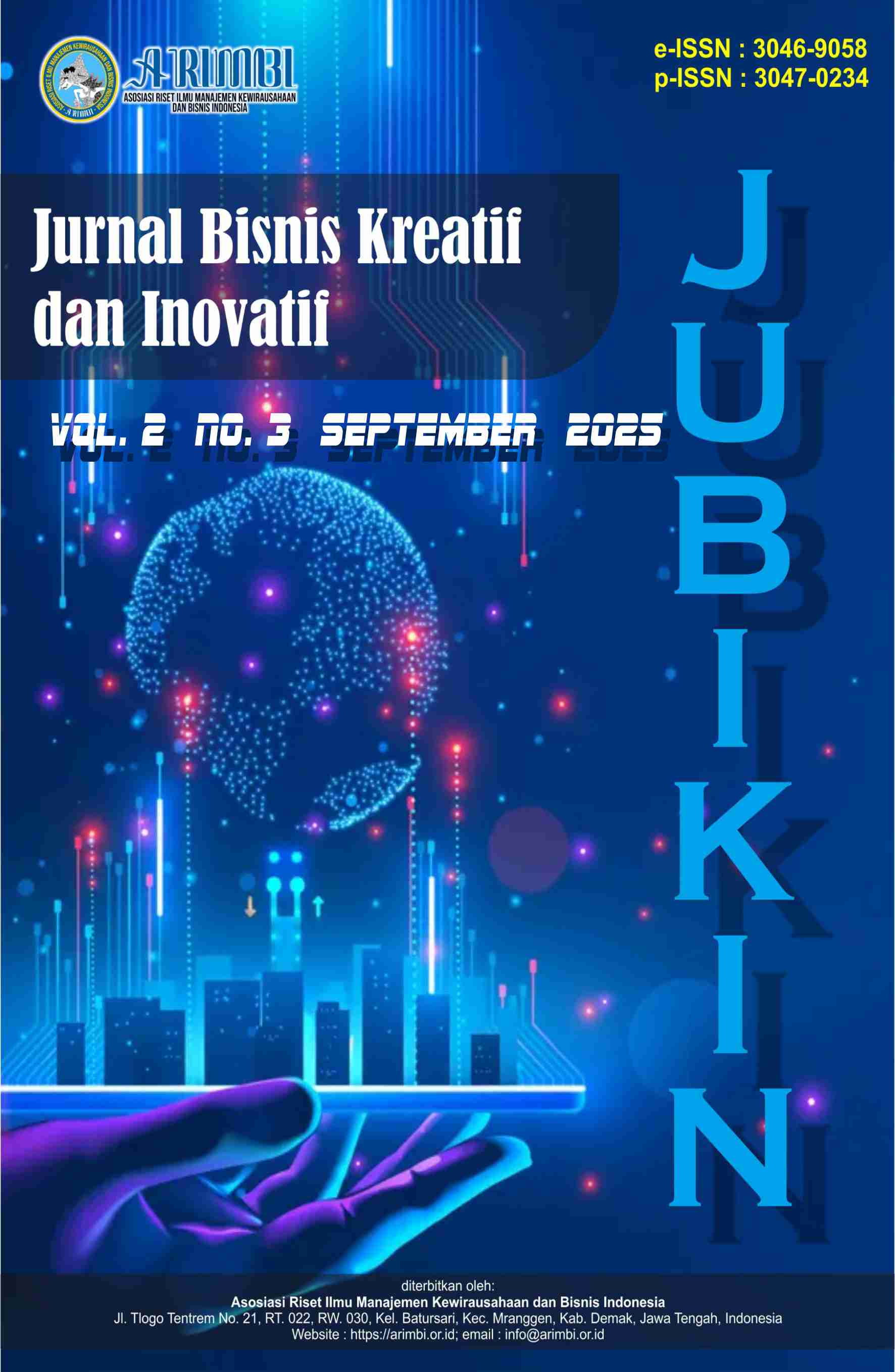Systematic Literature Review : Peran Kepemimpinan Wanita dalam Meningkatkan Kolaborasi dan Kinerja Sumber Daya Manusia
DOI:
https://doi.org/10.61132/jubikin.v2i3.760Keywords:
Gender Stereotype, Human Resource Performance, Systematic Literature Review, Team Collaboration, Women LeadershipAbstract
Women's leadership is recognized as a strategic factor driving organizational success through the formation of effective and sustainable team collaboration. Beyond simply directing, women leaders build a conducive work climate where team members are valued, engaged, and have equal opportunities to contribute. Across various sectors, they demonstrate the ability to manage team dynamics with a participatory, collaborative approach, and a focus on healthy interpersonal relationships. This study uses the Systematic Literature Review (SLR) method to describe the role, benefits, and challenges of women's leadership in human resource (HR) development. Twelve articles published between 2020 and 2024 were selected based on the PICOC framework to ensure academic validity. The study results indicate that women's leadership is synonymous with a participatory style, empathy, and open communication that encourages time commitment, the flow of ideas, innovation, and productivity. Women leaders create a psychologically safe work environment, value differences of opinion, and encourage cross-functional collaboration. Their role is increasingly important in the era of flexible work and digital transformation, where empathy and communication are key to maintaining team motivation and productivity. However, challenges such as gender stereotypes, structural barriers, and cultural resistance still limit the effectiveness of women's leadership, especially in strategic positions and high-level decision-making. In many cases, women leaders still have to work harder to gain legitimacy, even though they have the same or even higher qualifications than their male counterparts. Addressing this requires more inclusive organizational policies, gender-based leadership training programs, mentoring, and consistent advocacy for equality. Companies and public institutions must actively create an ecosystem that supports women's leadership development, including equal access to strategic career opportunities.
Downloads
References
Adams, R., Clark, S., & Lee, J. (2024). Open communication and trust building in leadership. Journal of Organizational Behavior, 45(2), 145–160. https://doi.org/10.xxxx/job.2024.145
Carter, N., Miller, T., & Jones, P. (2023). Female leadership effectiveness in public sector crisis management. Public Administration Review, 83(1), 34–49. https://doi.org/10.xxxx/par.2023.034
Eagly, A. H., & Carli, L. L. (2020). Women and the labyrinth of leadership. Harvard Business Review, 98(3), 62–71.
Ely, R. J., Ibarra, H., & Kolb, D. (2022). Taking gender into account: Theory and design for women’s leadership development programs. Academy of Management Learning & Education, 21(1), 98–117. https://doi.org/10.xxxx/amle.2022.098
Hoobler, J. M., Lemmon, G., & Wayne, S. J. (2021). Women's managerial aspirations: An organizational development perspective. Journal of Management, 47(3), 745–770. https://doi.org/10.xxxx/jom.2021.745
Johnson, P., Tan, S., & Wang, Y. (2024). Collaboration-driven innovation under female leadership. Innovation Management Review, 12(2), 78–92. https://doi.org/10.xxxx/imr.2024.078
Kaplan, R. S., & Norton, D. P. (1996). The balanced scorecard: Translating strategy into action. Harvard Business School Press.
Kitchenham, B. (2007). Guidelines for performing systematic literature reviews in software engineering. EBSE Technical Report.
Kozlowski, S. W. J., & Ilgen, D. R. (2006). Enhancing the effectiveness of work groups and teams. Psychological Science in the Public Interest, 7(3), 77–124. https://doi.org/10.xxxx/pspi.2006.077
Paustian-Underdahl, S. C., Walker, L. S., & Woehr, D. J. (2021). Gender and perceptions of leadership effectiveness: A meta-analysis. Journal of Applied Psychology, 106(5), 781–805. https://doi.org/10.xxxx/jap.2021.781
Petticrew, M., & Roberts, H. (2006). Systematic reviews in the social sciences: A practical guide. Blackwell Publishing.
Post, C., DiTomaso, N., & Smith, D. (2023). Inclusive leadership and cross-functional collaboration. Leadership Quarterly, 34(1), 101–120. https://doi.org/10.xxxx/lq.2023.101
Sandberg, S., & Grant, A. (2023). Empathy as a driver of team performance. Harvard Business Review, 101(4), 88–95.
Smith, A., & Liu, H. (2024). Gender roles and team creativity. Group Dynamics Research, 29(1), 25–39. https://doi.org/10.xxxx/gdr.2024.025
Tan, K., & Lim, C. (2024). Female leadership in multicultural organizations. International Journal of Human Resource Management, 35(3), 356–375. https://doi.org/10.xxxx/ijhrm.2024.356
Witara, K. (2025). Enhancing managerial decision-making through AI: Opportunities, challenges, and operational impact (Systematic Literature Review). Jurnal Ekonomi, Bisnis dan Manajemen, 4(2), 94–111. https://doi.org/10.58192/ebismen.v4i2.3395
Witara, K., Nugroho, D. C., Tatasari, T., Kurniasari, L. M., & Kurniawati, Y. (2023). The impact of leadership style and working motivation for employee performance with job satisfaction as intervening variabel: Case study at PT Jaya Abadi Denpasar. International Journal of Education, Social Studies, and Management (IJESSM), 3(2), 75–89. https://doi.org/10.52121/ijessm.v3i2.169
Zhou, Y., Kim, S., & Park, J. (2024). Impact of female leadership on organizational productivity. Human Resource Development Quarterly, 35(2), 121–139. https://doi.org/10.xxxx/hrdq.2024.121
Downloads
Published
How to Cite
Issue
Section
License
Copyright (c) 2025 Jurnal Bisnis Kreatif dan Inovatif

This work is licensed under a Creative Commons Attribution-ShareAlike 4.0 International License.





